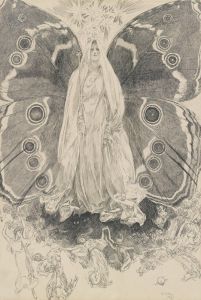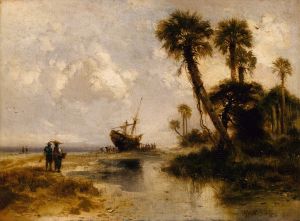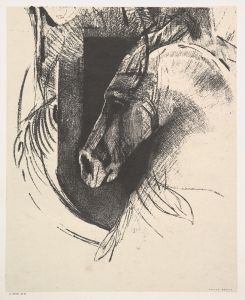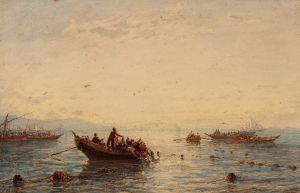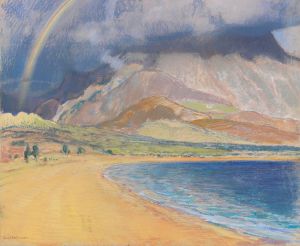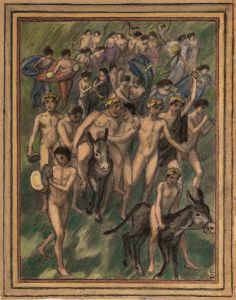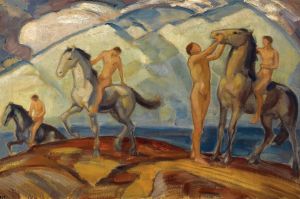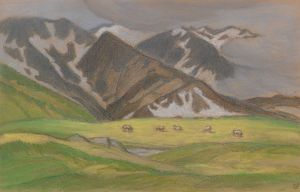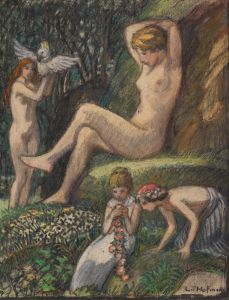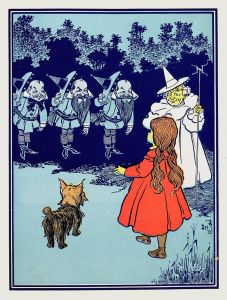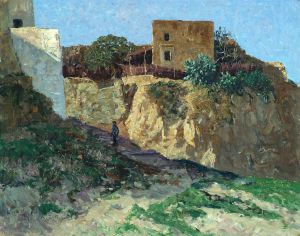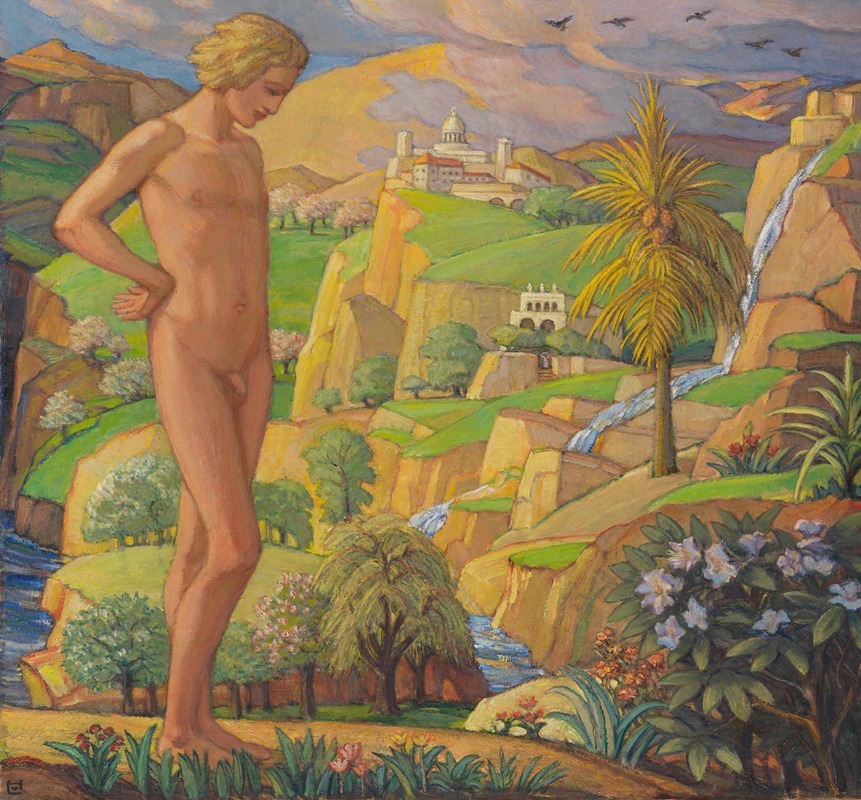
Die Zauberinsel
A hand-painted replica of Ludwig von Hofmann’s masterpiece Die Zauberinsel, meticulously crafted by professional artists to capture the true essence of the original. Each piece is created with museum-quality canvas and rare mineral pigments, carefully painted by experienced artists with delicate brushstrokes and rich, layered colors to perfectly recreate the texture of the original artwork. Unlike machine-printed reproductions, this hand-painted version brings the painting to life, infused with the artist’s emotions and skill in every stroke. Whether for personal collection or home decoration, it instantly elevates the artistic atmosphere of any space.
Ludwig von Hofmann (1861–1945) was a German painter and graphic artist associated with the Art Nouveau and Symbolist movements. His work often featured idyllic landscapes, mythological themes, and a harmonious interplay between human figures and nature. One of his notable works is "Die Zauberinsel" (The Magic Island), which exemplifies his artistic style and thematic interests.
"Die Zauberinsel" was created during a period when Hofmann was deeply influenced by the Symbolist movement, which sought to express the metaphysical and the mystical through art. The painting captures a serene and enchanting scene, likely inspired by classical mythology and the artist's own imaginative vision. In this work, Hofmann employs a soft, luminous palette and fluid, graceful lines to create a dreamlike atmosphere.
The composition of "Die Zauberinsel" features a tranquil island surrounded by calm waters, with lush vegetation and ethereal figures that seem to blend seamlessly into the natural surroundings. The figures, often depicted in flowing garments, appear to be engaged in leisurely activities, suggesting a utopian world free from the constraints of modern life. This idyllic setting reflects Hofmann's fascination with the idea of an untouched paradise, a recurring theme in his oeuvre.
Hofmann's technique in "Die Zauberinsel" showcases his mastery of color and light. He uses delicate gradations of tone to create a sense of depth and to enhance the otherworldly quality of the scene. The interplay of light and shadow adds to the painting's mystical ambiance, drawing the viewer into the serene and magical world that Hofmann has envisioned.
"Die Zauberinsel" is a testament to Hofmann's ability to merge the real with the fantastical, creating a visual narrative that invites contemplation and escape. The painting reflects the broader cultural and artistic currents of the late 19th and early 20th centuries, a time when artists were exploring new ways to represent the unseen and the spiritual.
Ludwig von Hofmann's work, including "Die Zauberinsel," has been exhibited in various galleries and museums, contributing to his reputation as a significant figure in the Symbolist and Art Nouveau movements. His paintings continue to be appreciated for their beauty, technical skill, and the sense of wonder they evoke.
In summary, "Die Zauberinsel" by Ludwig von Hofmann is a captivating example of Symbolist art, characterized by its serene landscape, harmonious figures, and mystical atmosphere. The painting reflects Hofmann's artistic vision and his ability to create a world where nature and imagination coexist in perfect harmony.





